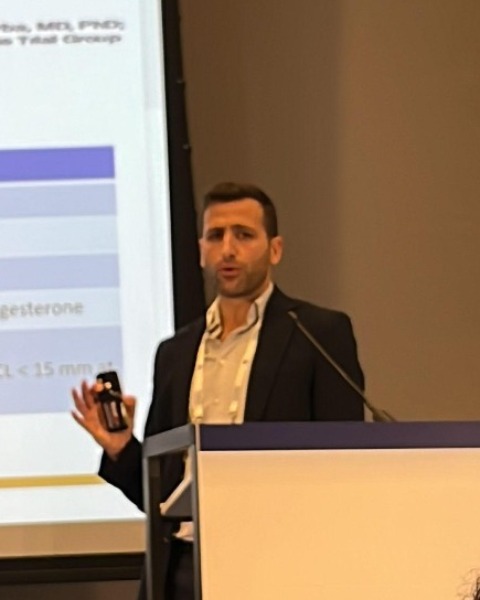Computers
Poster Session 3
(798) Personalized Machine Learning Model for Predicting Successful Vaginal Delivery during the Active Phase of Labor

Lee Reicher, MD (she/her/hers)
Resident
Lis Hospital for Women's Health, Tel Aviv Sourasky Medical Center
Tel-Aviv, Israel- sN
sharon Napadenski, PhD
Ben Gurion University of the Negev
Beer-Sheva, HaDarom, Israel 
Emmanuel Attali, MD
Lis Maternity Hospital, Department of Obstetrics and Gynecology, Sourasky Medical Center, Tel Aviv University
Tel Aviv, Israel- NR
Nadav Rappoport, PhD
Ben Gurion University of the Negev
Beer-Sheva, HaDarom, Israel - YY
Yariv Yogev, MD
Lis Hospital for Women's Health, Tel Aviv Sourasky Medical Center
Tel Aviv, Israel, Israel
Primary & Presenting Author(s)
Coauthor(s)
Accurate personalized prediction of delivery mode during the active stage improves resource allocation, reduces unnecessary interventions, and enhances patient-centered care. However, current machine learning models lack focus on active labor and effective use of labor-related data. The "black box" problem further impedes understanding, accuracy, and patient safety. We developed a personalized model using real-time data to predict successful vaginal delivery in the active phase and provide an explanation of the model's decision-making process.
Study Design:
Labor records from a single university affiliated tertiary medical center with approximately 12,500 deliveries annually, over a 10-year period. Three models were trained using both "static features" (e.g demographics) and "dynamic features" (e.g cervical dilatation, efficacy, and newly derived features calculated as ratios between adjusted dynamic measures and time differences). To assess the explainability of the best-performing model, we employed SHAP (SHapley Additive exPlanations) analysis, which is used to explain model prediction and show which features had most influenced the prediction.
Results:
- A total of 94,386 cases in which a trial of labor was attempted were identified. Of them 70,000 admitted to the active phase of labor (6 cm dilatation).
- We trained three types of classifier models predicting successful vaginal delivery: Random Forest classifier, Histogram-Based Gradient Boosting classifier, and neural network model
- Histogram-Based Gradient Boosting model achieved the highest scores: ROC AUC score and Precision recall AUC score was 0.87 (95% confidence interval, 0.858-0.892) and 0.52 (95% confidence interval, 0.511-0.542) respectively (Figure)
- SHAP analysis of the best model revealed key contributing features: rate of fetal descent, cervical opening rate, maternal age, and clinical fetal weight estimation.
Conclusion:
Our model accurately predicts delivery mode during active labor and and enhances decision-making by providing insights into prediction factors, improving transparency and validation

